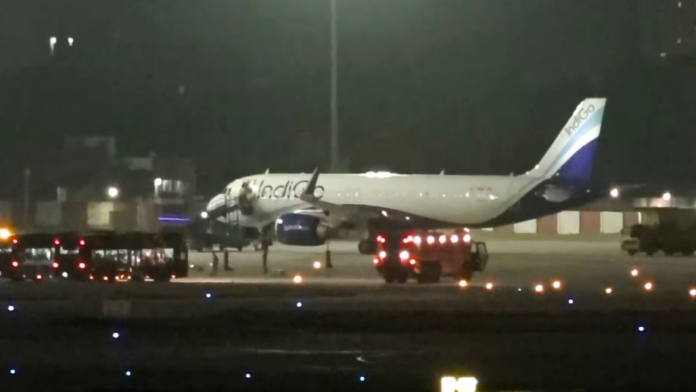In an alarming turn of events, the Indian aviation industry has suffered severe financial losses amounting to ₹7,500 crore due to a wave of fake bomb threats, according to a report by NDTV Profit. These bomb threats, which have plagued multiple airlines in the country, have forced emergency landings, resulting in a cascade of extra costs for the airlines involved. But beyond the immediate financial toll, this growing menace raises concerns about the safety and efficiency of air travel in India.
The Immediate Impact: Emergency Landings and Diversions
When an airline receives a bomb threat, it has no choice but to take it seriously. Planes are often diverted to the nearest airport for an emergency landing to ensure the safety of passengers. But what many might not realize is the domino effect these diversions cause.
Every time a flight is diverted due to a fake bomb threat, airlines bear significant costs:
- Fuel Costs: Diverting flights to airports far from their intended destination increases fuel consumption.
- Food and Accommodation: Airlines are required to arrange food and lodging for stranded passengers, further adding to the expenses.
- Airport Parking Fees: Once a flight makes an unscheduled landing, parking charges at the airport pile up.
- Overtime Pay: Pilots and crew are compensated for the extra hours they work during these emergencies.
According to the report, all these factors combined have led Indian airlines to incur an estimated loss of ₹7,500 crore so far, with each incident costing millions.
)
The Financial Ripple Effect
While the immediate losses are staggering, the true financial impact goes beyond emergency measures. These bomb hoaxes disrupt flight schedules, leading to delayed or cancelled flights. This not only inconveniences passengers but also dents the reputation of the airlines.
Moreover, airports themselves are not spared from the fallout. Each bomb scare results in heightened security protocols, diverting manpower and resources to handle these false alarms. This puts additional pressure on airport authorities, further straining an already stressed system.
Who’s Behind These Bomb Threats?
A critical question remains: who is responsible for these fake bomb threats, and why? Authorities are working hard to trace the origins of these hoaxes, but the sheer volume of threats has made it challenging to pinpoint the culprits. In some cases, threats have been traced back to individuals with no clear motive, while in others, it appears to be a case of deliberate sabotage aimed at creating chaos in the aviation industry.
Security Concerns: A Growing Problem?
These bomb hoaxes aren’t just a financial problem; they also raise serious security concerns. Each bomb threat forces authorities to conduct thorough security sweeps of both the aircraft and airports, delaying flights and causing chaos for passengers. While safety is the top priority, the increasing frequency of these hoaxes is causing unnecessary strain on the already burdened aviation security systems.
The Future: Can Airlines Prevent Such Threats?
While airlines are doing everything they can to ensure the safety of passengers, preventing bomb threats is a challenging task. Airlines are now seeking better coordination with aviation authorities and stricter penalties for those found responsible for hoaxes.
There is also a call for improved technology to detect hoax threats before they disrupt flight schedules. However, even with the latest technology, bomb threats—real or fake—must be treated seriously until proven otherwise.
A Costly Problem With No Clear Solution
The recent wave of fake bomb threats is wreaking havoc on India’s aviation industry. With losses now estimated at ₹7,500 crore, the financial impact is significant, but the toll on passengers and flight operations is just as concerning.
Until authorities find a way to clamp down on these hoaxes, airlines will continue to bear the brunt of these fake threats, and the costs will keep piling up.

